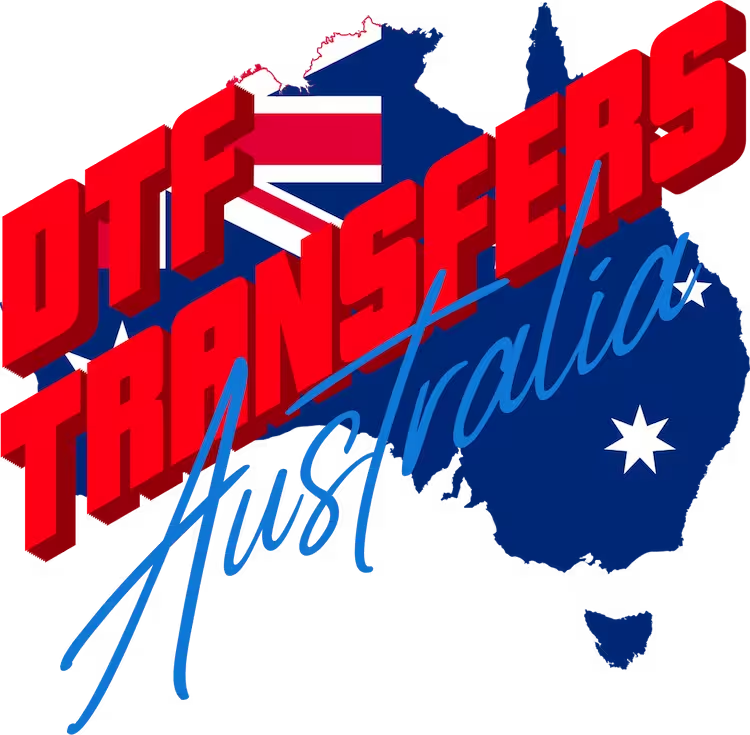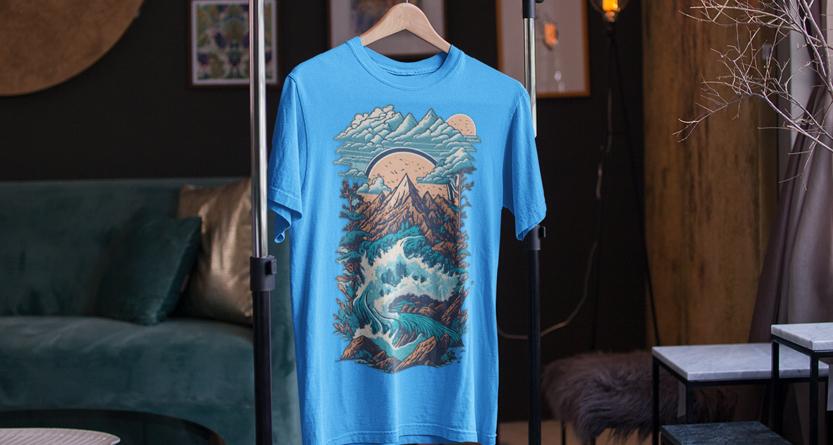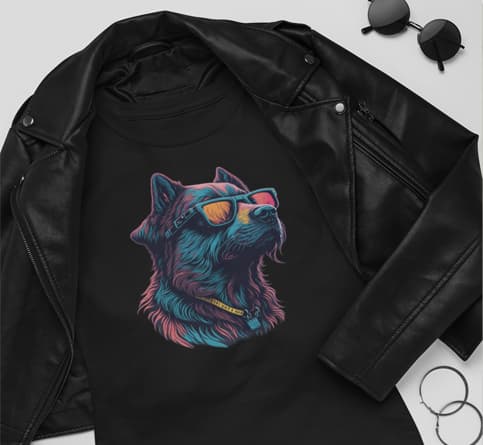All Posts, Helpful Info, Start a T-Shirt Business
Decoding How Much to Charge for Your T-Shirts
Deciding how much to charge for your T-Shirts can be a challenging task, even for the seasoned entrepreneurs.
This decision is crucial. It’s the line between profitability and losses in your t-shirt business.
Getting it right requires a keen understanding of several factors – from production costs to market trends. But let’s face it; this isn’t always straightforward.
If you’ve ever pondered ‘what amount should I request for my tees?’ or what is a good selling price, you’re in good company. As many businesses grapple with this question daily, striving to strike that perfect balance where profits meet customer satisfaction.
Table Of Contents:
- Decoding T-Shirt Pricing, How Much to Charge for Your T-Shirts?
- How Much to Charge for Your T-Shirts, Costs.
- How Much to Charge for Your T-Shirts, Customer Conception
- How Much to Charge for Your T-Shirts, Pricing Strategy
- How Much to Charge for Your T-Shirts, The Market
- FAQs on How Much to Charge for Your T-Shirts
- In Conclusion
Decoding T-Shirt Pricing, How Much to Charge for Your T-Shirts?
Setting the right price for your t-shirts can be a crucial decision for your business. By considering key factors and following a strategic approach, you can effectively determine the optimal pricing for your products.
Step 1: Balancing Quality and Cost
One of the first steps is finding the right balance between quality and total costs. Customers are ready to pay extra for a tee that offers great quality and fits well, as opposed to one that feels harsh and is ill-fitting. To achieve this balance, you need to consider not only the printing and design costs but also factors such as fabric type and fit. While using premium materials may increase production costs, it can justify higher prices due to enhanced comfort and durability.
Step 2: Brand Recognition
If you are relabeling your T Shirt this will not be as big a factor, but if you are leaving the manufactures label and tags in place, using a recognised brand can have some added benifits. A good example of this is AS Colour, as a lot of your customers will see them as a quality fashion brand that is of high quality and sells for a premium price.
Step 3: Maximising Profit through Pricing Strategies
To maximise your profit, it’s essential to employ effective pricing strategies when selling your shirts. Many retailers aim for a profit margin of around 30-50%, which can serve as a starting point for determining your pricing. Just make sure your markup price will still be fair in your customers eyes. Additionally, you may want to consider value-based or competitive pricing models, depending on what aligns best with your brand. These approaches can help you achieve desirable returns while still offering products that are both high in quality and affordable.
- A value-based model focuses on setting prices based on the perceived worth of the product to customers, rather than solely considering its manufacturing cost.
- In contrast, competitive pricing involves setting prices based on those offered by competitors in the market.
Step 4: Continuously Reviewing Prices
Lastly, it’s crucial to continuously review your pricing strategy to adapt to ever-changing market trends. Conducting competitor analysis, monitoring market trends, and gathering customer feedback are all essential in making informed pricing decisions.
Now that we’ve covered the process of determining the right price point for your printed t-shirts, our next section will delve deeper into understanding production costs, researching market trends, and analyzing competitor prices. These factors are integral to developing a successful business strategy within this domain.
Deciphering the right price for your printed t-shirts is a delicate dance between quality and cost. High-quality tees command higher prices, but don’t forget to factor in production costs like the cost of the T Shirt, the Printing costs and any other associated costs like packaging. To maximise profit, aim for about 30-50% margin and consider value-based or competitive pricing models that align with your brand ethos. Lastly, stay focused on where your brand sits, is it budget friendly, or a Premium Fashion brand?
How Much to Charge for Your T-Shirts, Costs.
If you’re on the brink of launching your t-shirt business, or even if you’ve already begun selling shirts, determining an optimal pricing strategy is paramount. Here’s what to keep in mind.
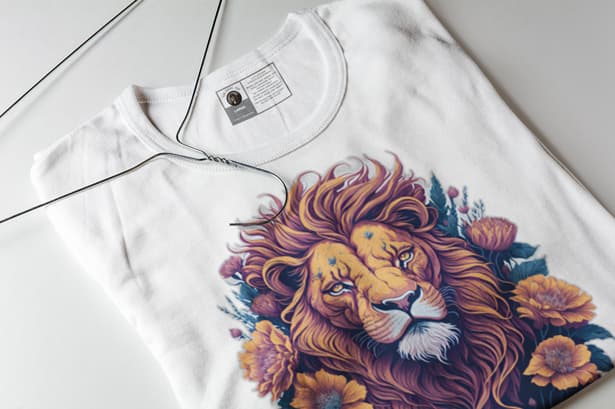
Navigating Through Production Costs
To ensure a profitable venture when making money from selling shirts, it’s essential to grasp all facets of production costs. This includes everything from buying theT Shirt, printing expenses, which can fluctuate based on design, to added costs like packaging and marketing.
Beyond basic production elements, adding retail extras like garment bags and branded hang tags may inflate overall costs but also enhance brand legitimacy and appeal. Such features not only help carve out a unique space in the crowded market but also boost potential profits.
Also make sure that you factor in other associated costs that your business may have as well, this could be selling fees on a market place like Etsy or eBay, or hosting fees for your own website. If you have a retail space you should even factor in Rent and outgoings as well.
As you can see there is more to the t-shirt cost than just the T Shirt and the cost of printing.
The Power of Market Research and Competitor Analysis
Staying ahead in any business means keeping up with market trends. In terms of a t-shirt enterprise, this could translate into understanding consumer preferences for styles or graphics at present or how seasonal shifts might influence demand patterns for different apparel types.
Apart from overarching trends, scrutinising competitor prices offers valuable insights about your products’ position within the marketplace. It’s vital not just to mirror these prices without thought but use them as reference markers while considering other aspects such as quality disparities or distinctive selling points that justify price differences.
As we move forward into exploring various components contributing directly towards producing each individual item, getting accurate cost per unit calculations becomes crucial. This approach allows businesses to make more informed decisions regarding their pricing strategies, striking a balance between competitiveness and profitability.
How Much to Charge for Your T-Shirts, Extra Costs
Learn how to effectively price your T-shirts by taking into account key factors that influence profitable strategies, ensuring your business covers all associated costs.
The Design Costs
Designing t-shirts is an art that requires specific skills or even hiring a graphic designer. The complexity of designs also plays a role, with more intricate ones naturally costing more.
Your chosen design approach should fit within your budget while still delivering quality. It’s important to remember that your investment in design directly influences the appeal of your finished product – after all, nobody wants a poorly designed shirt.
DIY Designs, can be a great method of creating unique designs,at an affordable price, after all it is just your time, but you should factor in something to cover your time. To get the best DIY Designs use your friends and family and ask them for un-bias oppinions about your designs.
After all you are just one good idea that turns into a viral video with your T Shirt design printed onto your branded t-shirt that goes ballistic.
Material Expenses
In addition to design costs, material expenses are a significant component when pricing your products. This includes not only the cost of the blank t-shirts but also printing materials like DTF transfers used during production. Buying volume and getting a price break can help with these costs.
Packaging and extras like re-labeling and swing tags, all should be considered, Does having an individual T-Shirt bag, with a T Shirt that has been relabled with your own tags, with a swing tag with your branding on it that is pined to the T Shirt add value and in the end by added value (eg price), or is it a cost based item that ends up with you making less on each sale.
These costs can vary depending on factors such as supplier choice and desired quality level for each item involved in creating those perfect custom t-shirts that everyone loves wearing.
You should consider the customer satasfaction of receiving the product, but this should not be done at the expense of profitability.
Understanding Your Costs
Your first step towards profitable pricing starts with a thorough understanding of your costs. Consider everything – direct expenses like labor charges, packaging fees, or shipping costs, along with indirect ones such as marketing efforts or website maintenance. If using a fulfilment services, make sure to also factor these costs into your products pricing.
The Overheads Factor
No business operates without overhead costs, and yours is no different. From utilities to rent (if you operate out of physical premises), marketing initiatives, and website maintenance and online storefront fees (such as the rate your payment gateway charges), if selling online through e-commerce platforms – all these factors contribute to the overall product price structure.
Make sure to account for them appropriately when determining final retail prices.
If selling on marketplaces like eBay make sure to incorporate all selling fees, don’t fall for the platforms tactics were they want you to sell for the cheapest price possible, and then when you work out all of the costs after a few months you reliase that 1/3rd of your total price was going to the platform.
Looking at all these components together giveing a comprehensive view of what goes into producing each individual shirt. In our next section, we’ll explore how to determine profitable markups without alienating customers.
How Much to Charge for Your T-Shirts, Customer Conception
Finding the correct equilibrium between cost and a good markup price can be a daunting task when it comes to custom printed t-shirts. But don’t worry. We’re here to help you navigate through the process effectively.
“To maximise profits while still offering value, it’s crucial to understand all your costs – from raw materials like blank t-shirts and printing to overheads such as rent or utilities.” DTF Transfers Australia
This is not just about covering production expenses; successful pricing strategies also need to take into account market expectations. Setting the right price requires careful thought and planning.
“Aim for at least a 30-50% gross margin on each product sold after accounting for these direct and indirect expenses.” DTF Transfers Australia
Navigating Market Expectations
The next phase involves conducting comprehensive market research – gaining insights into what customers are willing to pay by exploring pricing structures of similar businesses online or directly engaging potential customers through surveys or focus groups.
If there’s one thing more important than knowing your own costs when setting prices, it’s understanding what the competition offers.
The Power of Perceived Value and Pricing Psychology
Your brand image significantly influences the perceived value, which ultimately impacts how much people are willing to pay for your shirts. Pricing psychology techniques like charm pricing (ending prices with .99 instead of rounding up) subtly encourage purchases while maintaining profitability levels.
Bundle Pricing
Offering a bundle pricing can help to drive people to buy more, but be aware that this also has to be factored into your overall pricing to make sure that you have allowed for the discounts that you are offering your customers. There is little to no point on setting a t-shirt priced at $20.00 and then offering 20% discount when they buy 3 or more, when you t-shirts cost price is $15.00.
Competitiors Offerings
When you look at your competitors, do not just look at the price they are selling thier T-Shirt for, look at the whole picture, what t-shirt are they using as a base, how are they printing the design, what extras do they offer like free shipping. If you have an overall perspective you can better understand what your customers expect from them, and what you should be aiming to offer.
This is not always easy to do when your competitors sell their shirts online, but with a little reaserch you can usually get a good feel for what is on offer. Retail pricing for instore T-Shirts can be an easy way to start. Just walk into a shop and have a good look, and ask the assistiant a few questions.
Maintaining the Balance for Long-Term Success
Finding the right balance between generating profits and ensuring customer satisfaction may seem daunting, but it is achievable. Focusing on building relationships rather than solely chasing immediate profits will help establish long-term success within this industry.
Cracking the code of t-shirt pricing involves a deep dive into your costs, including everything from materials to overheads and marketing. Strive for at least 30-50% gross margin on each product after covering these expenses. But remember, it’s not just about you – understanding market expectations and competition is crucial too. Play around with pricing psychology techniques like charm pricing.
How Much to Charge for Your T-Shirts, Pricing Strategy
To work out a rate for your t-shirts, you must be informed about the industry, be aware of who is buying them and be methodical in your approach to your shirt costs.
Here are some proven strategies that can help you maximise profits while still providing value to customers.
1. Embrace Cost-Plus Pricing
One effective strategy is cost-plus pricing. This involves calculating all the costs associated with producing one unit, including materials and labour, and then adding a profit margin that suits your business. This approach ensures that every sale yields a profit, making it a reliable pricing strategy. You can use a T-Shirt Pricing Caculator to work out these pricing model.
2. Leverage Competitive Pricing
If standing out from your competitors is a priority, consider adopting competitive pricing. This strategy involves monitoring prices within the Australian T-Shirt sales landscape and setting your prices accordingly. Ideally, your costs should be similar or less than those of other firms without compromising on quality.
By offering competitive prices, you may attract clients who were previously loyal to your competitors. Just be aware that if you get into a battle of prices with a competitor it can be a race to the bottom.
3. Opt for Value-Based Pricing
Another effective strategy is value-based pricing. With this approach, you set your prices based on the perceived value that customers place on your unique designs or superior quality. If customers are willing to pay extra for your t-shirts because they see the value in them, this pricing strategy can be highly effective in increasing your profitability.
It’s important to remember that successful pricing is not static. Regularly reviewing and adjusting your prices based on market trends and customer feedback is crucial to staying competitive and meeting customer expectations.
By implementing these pricing strategies, businesses operating within the retail T-Shirt sector can increase profitability while keeping customer satisfaction at the forefront. Now, let’s explore more ways to optimise your t-shirt business in our next section.
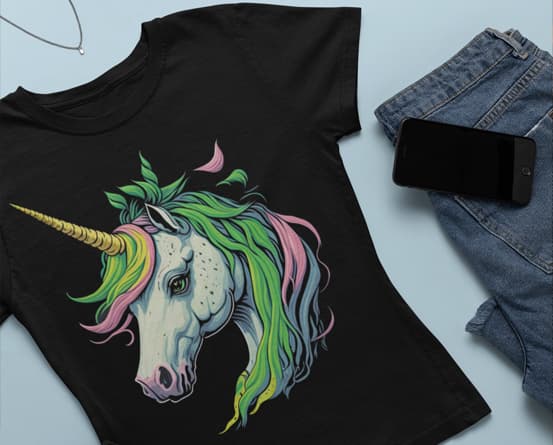
4. Having an Anchor Pricing
A smart soloution when setting your t-shirt pricing strategies is to have an anchor pricing, this is the minimum price you can sell your t-shirts for and you then work your pricing forward using the price stradegy with a price formula that works for you, this is done so you know the mimimum price you can sell your t-shirts for and still make some money.
Cracking the code of t-shirt pricing is more than just sticking a price tag on them. Know your market, understand your customers and apply strategic approaches like cost-plus pricing, competitive pricing or value-based pricing to maximise profits without skimping on customer satisfaction. Remember, good prices aren’t set in stone; they need regular reviews and tweaks based on trends and feedback.
How Much to Charge for Your T-Shirts, The Market
Mastering the art of pricing your custom printed t-shirts can be a challenging task. However, with a few strategic steps, you can make it an effortless process.
Let’s delve into these key strategies to help you effectively price your blank shirt that you have turned into your own brand.
1. Understand Your Market
Gain an in-depth understanding of the T Shirts and the types of designs that customers are purchasing, from how a customers perceive the t-shirts that your competitors are offering to how they look at your brand, its all important.
One of the common pitfalls is to look at what other online storefront are selling and not what is actually selling. It is more important to look at what sells, and not what is on offer. make comparasions to t-shirts you’re selling to what others have sold.
2. Gauge Market Prices
Pricing your t-shirts is not just about covering costs and adding profit; it also needs to reflect what customers are willing to pay. Therefore, understanding market rates is crucial.
- Analyse competitors’ prices for similar products. This will provide valuable context for setting competitive rates without underselling or overpricing yourself.
- Determine the value your product offers compared to others. If your t-shirts boast superior quality or unique designs, this could justify higher pricing.
- Tailor your pricing according to different customer segments based on their willingness to pay. Some customers may be willing to pay a premium for quality, while others may opt for more economical choices.
3. The On-Sale T-Shirt
A business selling On-Sale T Shirts all of the time, is not ideal, selling t-shirt at a lower price to clear excess stock is fine, but if you are operating a print on demand t-shirt business(this is where you print the t-shirts as you sell them) you should have little to no need to sell at on-sale prices, unless you have worked this into your pricing strategy. Make sure if you run a sale there is a good reason for doing it, not just for the sake of having a sale.
4. Educate the Market
Educate potential buyers about why certain materials, designs, or processes used in your t-shirts may command higher prices. This resource can help you explain the added value.Let the customers know why your T-Shirt is the price it is and why it is good value.
Mastering t-shirt pricing is a fine art, but with the right strategy it’s as easy as pie. First off, get your sums straight – know all costs involved in creating your tees, including overheads. Secondly, keep an eye on what others are charging and understand where you fit in that landscape. Remember though, don’t just reflect production cost.
FAQs on How Much to Charge for Your T-Shirts
We get it’s hard to get the perfect price for your T Shirts, so we have put together some of the most commonly asked questions.
How much should I charge for my tees?
Pricing t-shirts needs to be worked out on each individual business model, one price will not be right for all businesses, This article should help you work out your own pricing.
What is a good price to sell a t-shirt for?
A decent starting price for a T-shirt can range from $25-$30, depending on the quality of materials, design complexity, and brand positioning.
How much should you make per t-shirt?
The profit margin varies, but most retailers aim for around 50%. If your production cost is $10, charging $20 would yield a reasonable profit.
How much should I charge for a Designer T Shirt Online for?
T-Shirt printed with your own design, that you are turning into a lable can be priced anywhere between $20 – $100. Factors such as the Base T Shiurt used, the printing cost and overheads will all have an affect on the price you you sell for.
What is the formula for pricing tshirts?
The basic formula involves adding up all costs (material, labor ect), then applying your desired markup percentage to calculate your retail price.
In Conclusion
Figuring out what price to set for your T-Shirts is not a straightforward job. But, armed with the right knowledge and tools, you’re now better equipped.
From understanding production costs to calculating profitable markups – it’s all a part of the game.
Pricing strategies can make or break your t-shirt business. It’s about finding that sweet spot between maximising profits and providing value to customers.
You’ve learnt not just how to price your tees but also ways to optimise your entire t-shirt selling process.
If you’re ready for the next step in building a successful custom printed T-Shirt business, consider checking out DTF Transfers Australia. They offer high-quality print solutions tailored specifically for those looking to sell their own unique designs on shirts. Dive in today!
